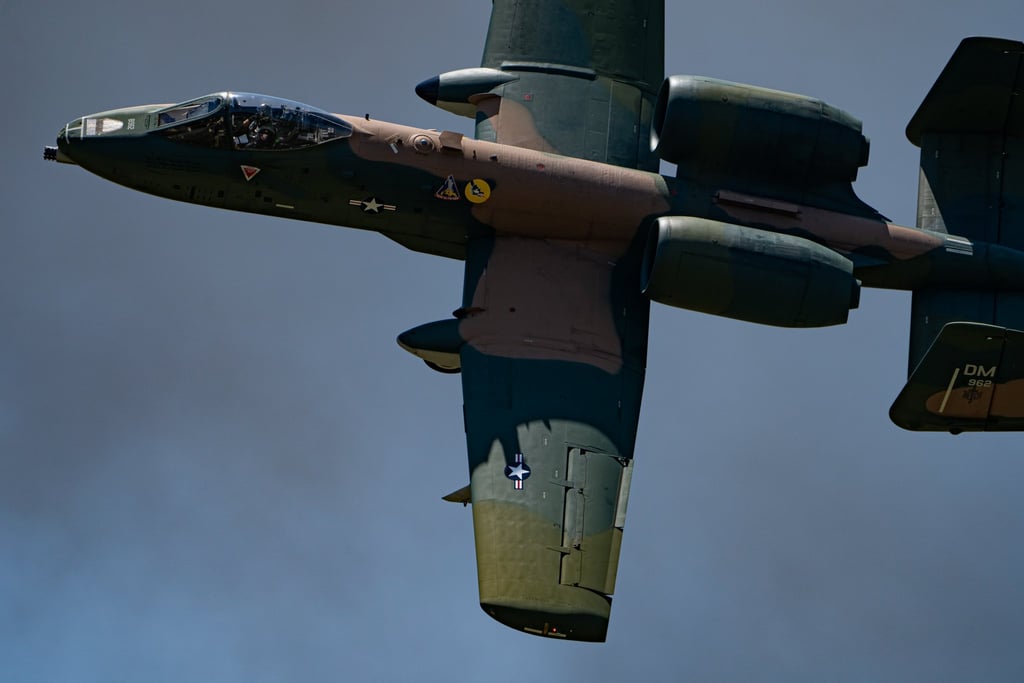The A-10 Warthog: The Legendary Tank Killer
Few aircraft in military history have earned as much respect from troops on the ground as the A-10 Thunderbolt II, better known as the Warthog. Designed for close air support, the A-10 is built like a flying tank, able to withstand heavy damage while delivering devastating firepower. With its unmistakable GAU-8 Avenger rotary cannon and rugged design, the Warthog has become a symbol of air dominance and battlefield survival.
Dr Edwards


Origins: Built for the Close Air Support Mission
The A-10 was developed in the early 1970s in response to the U.S. Air Force’s need for a dedicated close air support (CAS) aircraft. During the Vietnam War, fast-moving jets struggled to provide precise, sustained support for ground troops. The solution was a slow, heavily armored aircraft that could loiter over the battlefield and destroy enemy armor and fortifications with surgical precision.
In 1977, Fairchild Republic introduced the A-10, a rugged attack aircraft designed around its massive 30mm cannon. It entered service in 1976 and has since become one of the most feared aircraft in modern warfare.
The GAU-8 Avenger: The Ultimate Tank Killer
The heart of the A-10’s firepower is its GAU-8/A Avenger, a 30mm, seven-barrel Gatling gun that can fire up to 3,900 rounds per minute. This cannon is so powerful that:
It destroys enemy tanks with depleted uranium armor-piercing rounds.
The aircraft is literally built around the gun, ensuring stability when firing.
The recoil from the gun is so strong that it slows the aircraft when fired in bursts.
In addition to the GAU-8, the A-10 can carry:
Maverick missiles for precision strikes.
Rockets and bombs for attacking fortified positions.
Flares and countermeasures to evade enemy defenses.
Armor and Survivability: Built to Take a Hit
One of the Warthog’s most impressive features is its battlefield durability. Unlike most jets, which rely on speed and agility to survive, the A-10 is built to take a beating and keep flying.
Some of its survivability features include:
Titanium "bathtub" cockpit armor, protecting the pilot from anti-aircraft fire.
Dual engines mounted above the fuselage, reducing vulnerability to ground fire.
Self-sealing fuel tanks, preventing catastrophic fuel leaks.
Redundant flight control systems, allowing the aircraft to keep flying even if critical components are damaged.
There are multiple instances where heavily damaged A-10s returned safely to base, even with missing wings, shattered canopies, or engine failures. This resilience has earned the aircraft a legendary reputation among troops.
Combat History: A Proven Battlefield Warrior
The A-10 has seen action in multiple conflicts, proving its worth time and time again.
Gulf War (1991) – A-10s destroyed over 900 Iraqi tanks, 2,000 military vehicles, and 1,200 artillery pieces, making them one of the most effective weapons in the war.
Iraq and Afghanistan Wars (2001-2021) – The Warthog provided close air support against insurgent forces, protecting ground troops in intense firefights.
Recent Deployments – Despite calls to retire the A-10, it continues to play a vital role in modern conflicts, including missions against ISIS.
The Future of the Warthog
Despite its effectiveness, the A-10 has faced multiple retirement threats as the Air Force shifts toward stealth and multi-role aircraft like the F-35 Lightning II. However, due to overwhelming support from ground troops and military leaders, the A-10 fleet has received multiple upgrades, including:
New avionics and targeting systems to keep the aircraft relevant in modern warfare.
Wing replacements to extend the A-10’s service life into the 2040s.
Enhanced weapons integration, ensuring the Warthog remains lethal on the battlefield.
Why Troops Love the Warthog
Ground troops adore the A-10 because it does one thing exceptionally well—saving their lives. Soldiers and Marines have repeatedly praised the Warthog for its ability to provide precision strikes, loiter for extended periods, and absorb enemy fire while keeping them safe.
Its signature BRRRRT! sound—the rapid-fire burst of the GAU-8 Avenger—has become one of the most recognized (and feared) noises on the battlefield.
Conclusion
The A-10 Warthog is a living legend, unmatched in its ability to deliver close air support and protect ground forces. Its lethal firepower, rugged durability, and battlefield-proven track record make it one of the most beloved aircraft in U.S. military history.
Despite debates about its future, the A-10 continues to fly because it works, proving that sometimes old-school, brute-force effectiveness is exactly what the battlefield demands.
For now, the Warthog still reigns supreme, and as long as troops are fighting on the ground, they’ll want the A-10 in the sky above them.